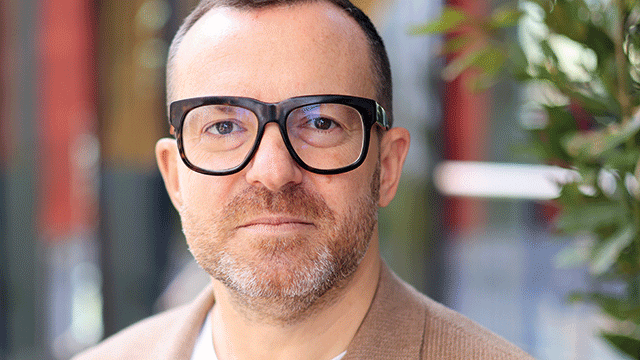The changing face of hostel accommodation
Ah, millennials. Don’t you just love them? Well, hostel operators most certainly do – or at least they ought to.
And with good reason: youth travellers (aged 18-35) are on the up. The United Nations World Tourism Organisation predicts 370m of them will be on the move worldwide by 2020.
As a result, Colliers International believes hostel revenue growth will increase globally at an annual rate of 8%.
Ah, millennials. Don’t you just love them? Well, hostel operators most certainly do – or at least they ought to.
And with good reason: youth travellers (aged 18-35) are on the up. The United Nations World Tourism Organisation predicts 370m of them will be on the move worldwide by 2020.
As a result, Colliers International believes hostel revenue growth will increase globally at an annual rate of 8%.
Those kinds of numbers have made investors sit up and take action (see box). Some of Europe’s leading hostel brands, including A&O and Meininger, have recently changed hands.
The latest deal completed earlier this year when private equity property fund Queensgate Investments paid Patron Capital and Invesco £395m for the Generator chain.
“There has been a renaissance of the market since the A&O and Generator sales,” says Harry Douglass, associate director at specialist hospitality consultancy HVS. And recent movements have also caught the eye of traditional hotel chains.
Douglass says: “More and more hotel companies will move to multi-bedded rooms, but there will be a limit as they don’t want to alienate existing customers.”
Industry sources say several hotel chains considered Generator while it was on the market, though none elected to buy.
In a process known in the technology sector as convergence, while hoteliers are looking at developing hostel-like products, hostel operators are moving in on budget hotel territory, with the provision of private and family rooms.
Safety in numbers
Huge dorms are on the way out. UK-based chain Safestay has a limit of eight beds per room.
“We think we can reformulate the product, especially by developing a family offer, as budget hotels just aren’t equipped to deal with that,” says Nuno Sacramento, the company’s chief operating officer.
If budget hotel operators aren’t exactly quaking in their boots, that may be because hostels currently represent just 3% of total accommodation in the UK and only 1.5% of rooms, according to leisure specialist Christie & Co.
The market is also very fragmented and still dominated by small, independent operators.
“We calculate that there are around 50 hostel developments currently under way in the UK, totalling 1,500 rooms. Many of these are extensions,” says Carine Bonnejean, Christie & Co’s head of hotels consultancy.
She points out that the sector is still working on overcoming historic, and largely outdated, perceptions of a cheap and cheerful product.
On the other hand, she adds, the resilience of the youth market means that external factors such as Brexit and terrorism are less likely to impact the sector.
That means plenty more activity across the UK. A&O, which has 23,000 beds across Europe, is one of the few chains not to have opened here.
But founder and chief executive Oliver Winter is currently recruiting a property professional with a hospitality background to source up to five properties in London as well as others in Manchester, Liverpool and Brighton.
[caption id="attachment_888164" align="aligncenter" width="847"] Safestay hostel, Holland Park, W8[/caption]
At the other end of the scale, Edinburgh-based CODE, which will have 450 beds in the city by the end of next year, also has London in its sights as part of a global expansion strategy.
Founder Andy Landsburgh is more cautious about other UK regional cities.
He says: “In some places it’s possible to stay in budget hotels for £60 per night. We are far more likely to be successful in places where budget hotel prices are £100-120 per night.”
What is a hostel?
The definition of a hostel is in flux as a new generation of operators introduces new products to woo the burgeoning youth travel market.
A basic description, suggests a recent report by Colliers International, is: “budget accommodation, where guests rent a bed in a dormitory, thus sharing facilities in a hybrid hotel product, mixing hotel services with informality”.
The picture is more complicated however, as operators are increasingly introducing private and dedicated family rooms.
So for now, the most accurate definition of a hostel is probably whatever an operator chooses to say it is.
Global opportunities
“For once Europe is ahead of the US in terms of brand recognition and presentation,” says Christie & Co senior consultant Anna Eck.
Because the US has, until recently, been dominated by independent operators, it is seen as fertile ground by the modern breed of hostel chains.
Generator is due to open its first North American hostel in Miami Beach, Florida, and other players are planning on following suit. Edinburgh-based CODE, for example, has New York, Boston and Los Angeles on its target list.
Mainland Europe is also expected see plenty more activity over the next few years.
This summer, Safestay completed the acquisition of small operator Equity Point, adding Lisbon, Barcelona and Prague to its network in one sweep. And German giant A&O plans to expand further into Italy and Spain, after opening in Venice and Copenhagen earlier this year.
This activity hasn’t gone unnoticed by those further afield. “We are advising a number of Asian investors and there is definite interest in expanding European-type operations to Asia,” says Eck.
Investing in hostels
Is now the time for investors to buy into the hostel sector? As the youth travel market is set to increase (see main text), hostels are in pole position to cash in on the extra expenditure.
Carine Bonnejean, head of hotels consultancy at Christie & Co, says: “The Generator deal has shown that hostels are now acceptable as an asset class.”
That’s good news for fledgling operators such as Edinburgh’s CODE. Founder Andy Landsburgh says: “I’ve been speaking to a number of funds [about potential investment]. There is now a lot more interest than there was even a couple of years ago when I was knocking on doors.”
He suggests that a lack of large deals has suppressed the drop in yields seen in other property sectors, but predicts that a fall is likely to come.
There are also risks that shouldn’t be downplayed, says Safestay’s chief operating officer Nuno Sacramento, who points out that hostels are not as well regulated as other segments of the hotel market. They could also be vulnerable in terms of pricing.
“If there is a supply shortage, a hotel can increase its prices, whereas with hostels there is a true limit to what people will pay to share a room with seven strangers – and you have to know what that price is,” he says.
The millennial market can be notoriously fickle, but industry experts are convinced the hostels boom is no flash in the pan.
Marie Hickey, research director at Savills, says: “The same questions were raised about budget hotels 25 years ago – and they’re now the biggest part of the investor market.
“Hostels will thrive as long as brands evolve to meet the changing demands of the market.”
[caption id="attachment_888169" align="aligncenter" width="847"] A family room at A&O hostel, Venice[/caption]
Mark Simmons











